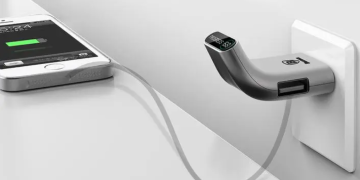Introduction
In an increasingly interconnected world, digital security has never been more critical. From personal computers to smartphones and IoT devices, our digital lives are constantly under threat from various cyber threats. This article explores essential strategies for protecting your devices and data in today’s connected world.
Understanding Digital Threats
Digital threats come in many forms, including viruses, malware, phishing scams, and data breaches. These threats exploit vulnerabilities in software and networks to gain unauthorized access to sensitive information or disrupt normal operations. Understanding the types of digital threats and common vulnerabilities is the first step in safeguarding your digital assets.
Creating Strong Passwords
One of the simplest yet most effective ways to protect your accounts is by using strong, unique passwords. A strong password should be long, complex, and contain a combination of letters, numbers, and special characters. Avoid using easily guessable information such as your name or birthday, and consider using a password manager to securely store and manage your passwords.
Implementing Two-Factor Authentication (2FA)
Two-factor authentication (2FA) adds an extra layer of security to your accounts by requiring two forms of verification before granting access. This typically involves something you know (like a password) and something you have (such as a smartphone or security key). Enabling 2FA wherever possible significantly reduces the risk of unauthorized access to your accounts.
Keeping Software Updated
Software updates often include patches for security vulnerabilities identified by developers or researchers. Keeping your operating system, applications, and firmware up-to-date is essential for protecting against known vulnerabilities and minimizing the risk of exploitation by cybercriminals.
Securing Your Network
Securing your home network is crucial for preventing unauthorized access to your devices and data. Start by changing the default login credentials for your router and enabling encryption (such as WPA2) to protect your Wi-Fi network. Additionally, consider setting up a guest network for visitors to isolate their devices from your primary network.
Using Secure Connections
When accessing the internet, always use secure connections whenever possible. Look for HTTPS in the URL bar of your browser, particularly when entering sensitive information like passwords or payment details. Avoid connecting to public Wi-Fi networks, as they pose significant security risks due to the potential for eavesdropping and man-in-the-middle attacks.
Protecting Against Malware
Malware, including viruses, ransomware, and spyware, can wreak havoc on your devices and compromise your personal information. To protect against malware infections, install reputable antivirus software, avoid downloading software from untrusted sources, and exercise caution when clicking on links or downloading attachments from unknown sources.
Encrypting Sensitive Data
Data encryption scrambles information in such a way that only authorized parties can decrypt and read it. Encrypting sensitive data, both in transit and at rest, adds an extra layer of security against unauthorized access and data breaches. Many modern operating systems and applications offer built-in encryption features, so be sure to enable them wherever possible.
Backing Up Your Data
Data backups are essential for safeguarding your information against loss due to hardware failure, theft, or cyber attacks. Regularly backup your data to an external hard drive, cloud storage service, or both, and ensure that backups are encrypted and stored securely to prevent unauthorized access.
Avoiding Phishing Attacks
Phishing attacks attempt to trick users into divulging sensitive information or installing malware by posing as legitimate entities. Be wary of unsolicited emails, messages, or phone calls requesting personal or financial information, and always verify the authenticity of communications before taking any action.
Securing Your Mobile Devices
Mobile devices are increasingly targeted by cybercriminals due to their prevalence and the wealth of sensitive information they contain. To secure your smartphone or tablet, enable device encryption, use a secure lock screen, install reputable security apps, and keep your device and apps updated with the latest security patches.
Privacy Settings and Permissions
Review and adjust privacy settings on your devices and online accounts to control what information is shared with third parties. Be mindful of app permissions and only grant access to the data and features necessary for the app to function properly. Regularly review and revoke permissions for apps that no longer require access to certain resources.
Monitoring Your Accounts
Regularly monitor your accounts for any suspicious activity, such as unauthorized logins or transactions. Enable account alerts and notifications to receive real-time alerts of any unusual activity, and promptly report any suspicious or fraudulent activity to the appropriate authorities or financial institutions.
Conclusion
In conclusion, protecting your devices and data in today’s connected world requires a proactive approach to digital security. By understanding the various threats and implementing best practices such as strong passwords, two-factor authentication, and regular software updates, you can minimize the risk of falling victim to cyber attacks and safeguard your digital assets.

FAQs After The Conclusion
- How can I detect if my device has been compromised by malware? Look out for signs such as slow performance, unexpected pop-up windows, unexplained changes in settings or behavior, and unusual network activity.
- Is it safe to use public Wi-Fi networks with a VPN? While using a VPN can add an extra layer of security when using public Wi-Fi, it’s still important to exercise caution and avoid accessing sensitive information over unsecured networks.
- What should I do if I suspect that my accounts have been compromised? Immediately change your passwords, enable two-factor authentication if available, notify the affected service providers, and monitor your accounts for any further suspicious activity.
- Can digital security threats affect IoT devices like smart home appliances? Yes, IoT devices are susceptible to various security threats, including malware infections, data breaches, and unauthorized access. It’s essential to secure these devices by following best practices such as changing default passwords and keeping firmware updated.
- How often should I update my passwords? It’s recommended to update your passwords regularly, ideally every few months, especially for sensitive accounts such as online banking or email accounts.
- What should I do if I receive a suspicious email or message? Exercise caution and avoid clicking on any links or downloading attachments from unknown or suspicious sources. Report the email as spam or phishing to your email provider and delete it immediately.
- Are biometric authentication methods like fingerprint or facial recognition secure? Biometric authentication methods offer an additional layer of security and convenience, but they are not foolproof. Biometric data can still be spoofed or stolen, so it’s essential to use them in conjunction with other security measures like strong passwords and two-factor authentication.
- How can I protect my children from online threats and inappropriate content? Set up parental controls on devices and internet routers to restrict access to age-appropriate content, educate children about online safety, and supervise their online activities whenever possible.















